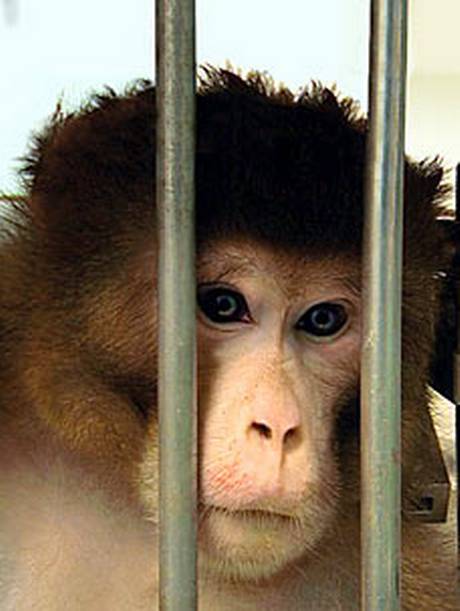Animal testing
Animal testing, also known as animal experimentation, animal research, and in vivo testing, is the use of non-human animals in experiments (although some research about animals involves only natural behaviors or pure observation, such as a mouse running a maze or field studies of chimp troops). Worldwide it is estimated that the number of vertebrate animals—from zebrafish to non-human primates—ranges from the tens of millions to more than 100 million used annually. Invertebrates, mice, rats, birds, fish, frogs, and animals not yet weaned are not included in the figures in the United States; one estimate of mice and rats used in the US alone in 2001 was 80 million. Most animals are euthanized after being used in an experiment. Sources of laboratory animals vary between countries and species; most animals are purpose-bred, while others are caught in the wild or supplied by dealers who obtain them from auctions and pounds. The research is conducted inside universities, medical schools, pharmaceutical companies, farms, defense establishments, and commercial facilities that provide animal-testing services to industry. It includes pure research such as genetics, developmental biology, behavioral studies, as well as applied research such as biomedical research, xenotransplantation, drug testing and toxicology tests, including cosmetics testing. Animals are also used for education, breeding, and defense research. The practice is regulated to various degrees in different countries. Supporters of the use of animals in experiments, such as the British Royal Society, argue that virtually every medical achievement in the 20th century relied on the use of animal

in some way, with the Institute for Laboratory Animal Research of the U.S. National Academy of Sciences arguing that even sophisticated computers are unable to model interactions between molecules, cells, tissues, organs, organisms, and the environment, making animal research necessary in many areas. Animal rights, and some animal welfare, organizations—such as PETA and BUAV—question the legitimacy of it, arguing that it is cruel, poor scientific practice, poorly regulated, that medical progress is being held back by misleading animal models, that some of the tests are outdated, that it cannot reliably predict effects in humans, that the costs outweigh the benefits, or that animals have an intrinsic right not to be used for experimentation The terms animal testing, animal experimentation, animal research, in vivo testing, and vivisection have similar denotations but different connotations. Literally, "vivisection" means the "cutting up" of a living animal, and historically referred only to experiments that involved the dissection of live animals. The term is occasionally used to refer pejoratively to any experiment using living animals; for example, the Encyclop?dia Britannica defines "vivisection" as: "Operation on a living animal for experimental rather than healing purposes; more broadly, all experimentation on live animals", although dictionaries point out that the broader definition is "used only by people who are opposed to such work". The word has a negative connotation, implying torture, suffering, and death. The word "vivisection" is preferred by those opposed to this research, whereas scientists typically use the term "animal experimentation"